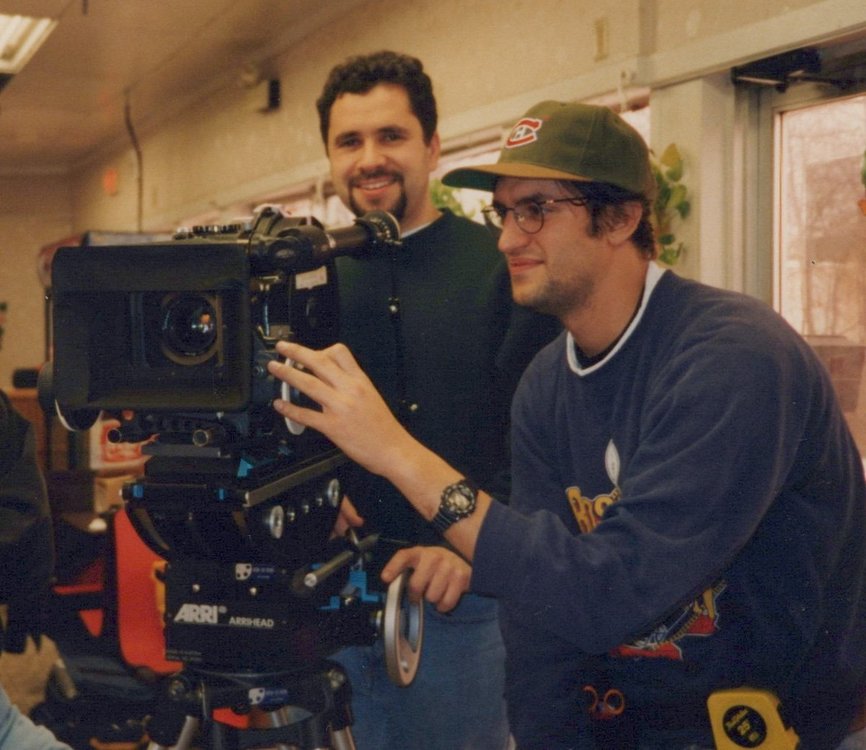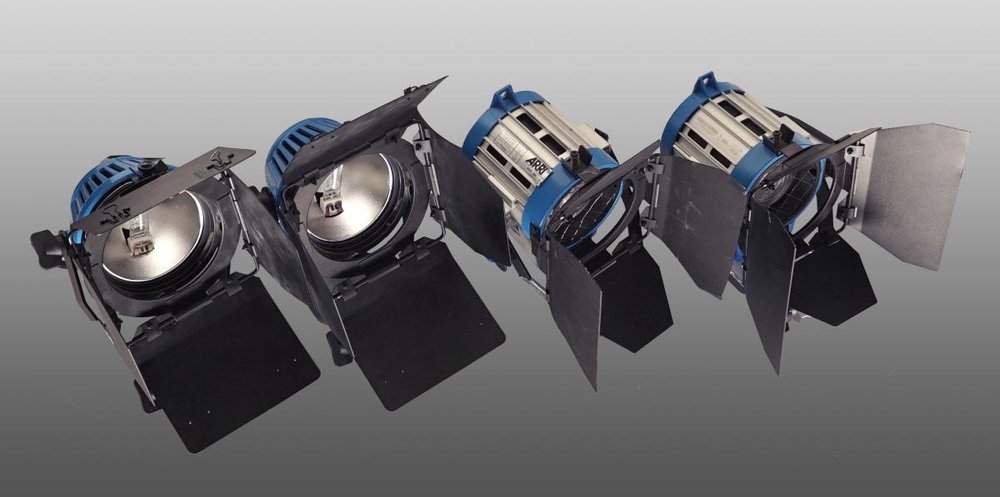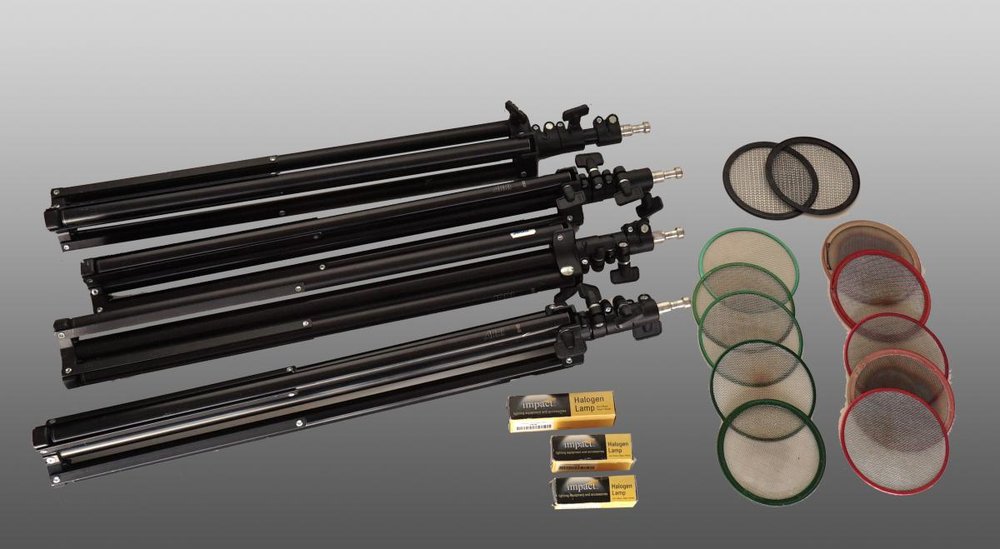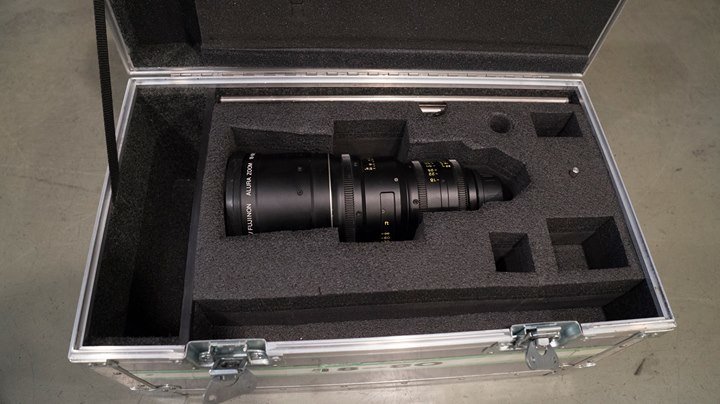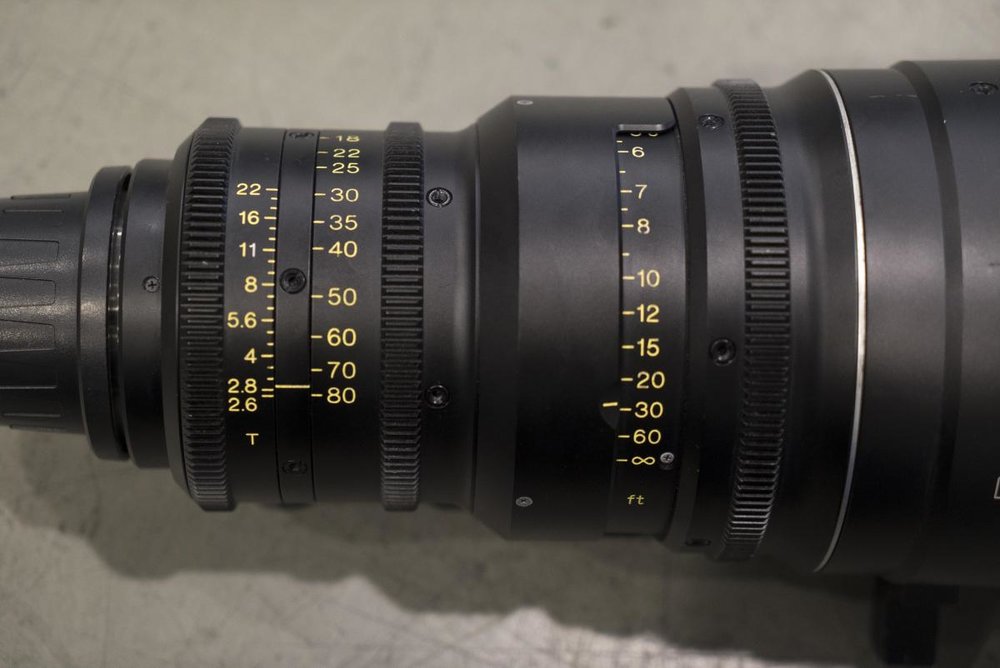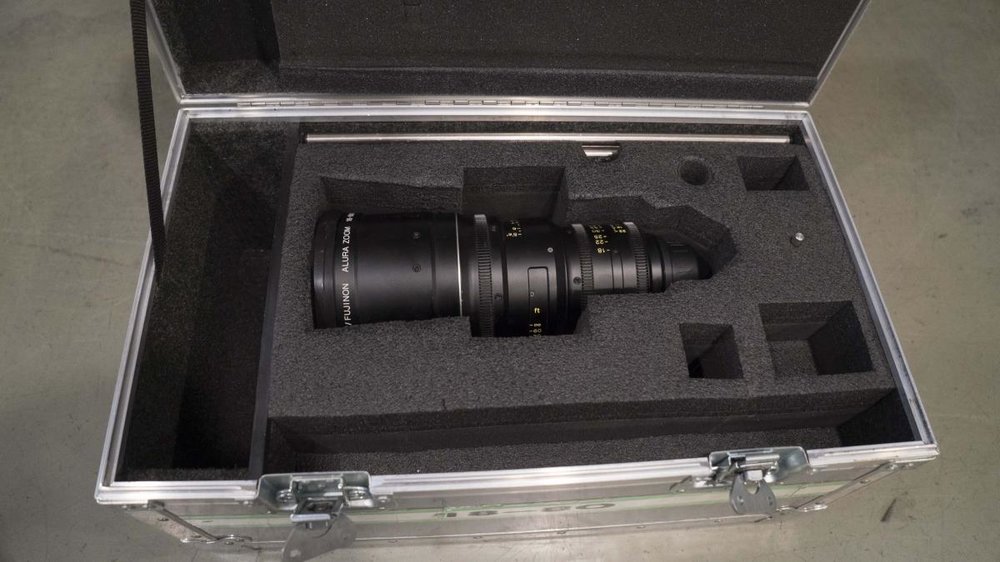-
Posts
44 -
Joined
-
Last visited
Everything posted by Charles Papert
-
Wayyy late to this conversation but in case someone searches it: I rent a variety of tube cameras including JVC KY1900’s as well as consumer single tube cameras, pre-configured with analog to digital conversion and uprez to HD-SDI , onboard file based recording etc. Please see zgrents.com for more info!
-
I can't think of any. specific tip on that regard other than just keep practicing! If you have been following fish and airplanes, they rarely stop on a dime, so you are getting less practice in stopping and starting smoothly. Humans that you can direct help with this! Maybe you can assemble a reel of footage from long uninterrupted takes with people moving in the frame and play back on a large screen TV and follow along? At a certain point, you just have to get out there on a set and use them with real stakes, that's where the rest of the learning takes place. Trial by fire! Unfortunately the hardest thing to manage with the wheels is backpanning, which is tough to replicate at home. It's not as common to encounter any more since a lot of remote head work is stabilized now, which helps a lot, but nothing really prepares you for having the chassis rotate and you have to counter-pan to keep the lens pointed straight ahead. The worst scenario is a small crane or jib which describes a short arc when swung around, so the backpanning is quite fierce. Similarly a dolly in steering mode (vs crab). Again this is becoming less common but it could still come up! I guess a way to replicate this would be to mount your head on a hi hat on top of a turntable or lazy susan and having someone rotate it, come to a stop, reverse direction etc. while you do your practicing following subjects.
-
Which accessories? Reduction wheels? not really needed. I think it safe to say that the skill is transferable, although I imagine it would be harder for someone who has only learned it on the remote head side to use a geared head since there is a difference in feel between the gears (more resistance in 3rd vs 1st), plus the if one is used to dialing in a precise ratio as you can do with remote heads, it might be hard to adjust to only 3 gears, especially with a very fast or very slow move.
-
Whatever works for you is all that really counts! Might as well mention one other fun trick which helps with landing perfect headroom when an actor stands up quickly out of a chair. Start with framing them in the standing position. Lock the tilt on the head and slip into neutral. Rotate the wheel so that the pin is in the 12 o'clock upright position. Go back into gear and unlock the head. Now have them sit, and count how many rotations of the wheels it takes to land your seated frame. So now when they stand, it takes all the guesswork out of it, you count the rotations in your head and stop the wheel with the pin at 12, and voila, perfect headroom every time. It doesn't have to be at 12, it could be any orientation you preferred as long as you can stop it there repeatedly at high speed.
-
The hard part about panning in neutral like that is coming to a controlled stop without kickback since there is no resistance. Also if you have to continue on in the shot after the pan with subtle moves, you'd have to shift it into gear on the fly, which is doable but a little challenging. So most of the time I'd have it in 3rd gear, spin up the pan wheel, continue to drive the pan by pushing the tilt wheel, then use the heel of my hand on the pan wheel to gently feather it into the stop. And then you can continue on operating. I did do it in neutral sometimes but never used a pan bar.
-
I came up in the Boston market and in my mid 20's decided it was time to learn how to operate the mystical geared head. I borrowed a Mini-Worrall from Boston Camera over the winter months when production was quiet and did the laser pointer exercises every day. The next spring I was doing Steadicam on a commercial that was also using a Power Pod on a Giraffe crane and it turned out that no-one on set had experience on the wheels (how did that happen?!) so I bravely jumped in and navigated my first backpan adventure, a full arm swing pointed straight ahead, which was lightly terrifying! Not long after that I shot my first feature ('95 or so) and requested the shiny Arrihead 2 for that and got some good hours in, seen below. A year later I landed a union operating gig on a network TV series in New Orleans replacing another operator, and my first three shots were Steadicam, handheld and dolly with the geared head. It was almost like an audition and I was very glad to have bothered to learn the skill. Shortly thereafter I moved to LA and was working consistently as an operator and every set had a Panahead or Arrihead. It became my favorite way to work, to the point where I got rusty on the fluid head in comparison! On "Scrubs" we did a lot of whip pans and it was fun learning how to throw the wheels. Years later I dayplayed on a series and used the Arrihead for that purpose and half of village came trotting in to watch the spectacle, which seemed weird until the AC told me that none of the other operators did it that way so this was a point of intrigue. When I moved up to DP, I'd put the Arrihead on the rental list but when the inevitable cuts were made it was one of the first things to go. A few years ago on a bigger show I offered it to the operators but they weren't interested. Even when I told them that if you were going to fall asleep in the eyepiece, it was easier to do so on the wheels, less chance of a bump in the shot! Ah well. Last thing I'll say is that I have seen a disturbing trend with remote head wheel interfaces gaining new popularity for controlling gimbals, where newer DP's and operators start re-assigning the wheels to suit what "makes sense" to them, not only direction but sometimes swapping pan and tilt. This of course means they will be quite discombobulated if they ever encountered a geared head, which feels like a real waste.
-
Mixed kit consisting of (2) Arrilite 600 open face and (2) Arri 300's (images 3, 4, 5 below). Perfect for today's more sensitive cameras. The open face units are great for bouncing or pushing through diffusion, as they give you more output for the power draw and wider spread than fresnels. And the 300's are great as accent lights, backlights or for slashes. This kit has the four lights with globes and barn doors, four stands, 5 ea. single and double scrims, plus one 300s and two 500w spare globes. Comes in Arri thermodyne case. Very little use and very clean. Asking $800 Lights are located in Los Angeles so local pickup preferred, will consider shipping (domestic only).
-
Privately owned Alura 18-80 T2.6 lens, imperial markings. Checked out by lens service at major rental house, clean bill of health. Glass elements clean. Usual wear marks on body. Innerspace case. Included are 15 and 19mm lens supports and rods. $18250 obo.
-
Very good condition, no optical or mechanical issues, just typical use marks on the mount and chassis. Privately owned and operated. Comes with Innerspace case, 15 and 19mm rods, 15 and 19mm lens support. $18,250.
-

looking for a front surface mirror
Charles Papert replied to Kevin Halverson's topic in Cinematographers
Waking up a topic 10 years later....wakey wakey. Any other sources for renting a front surface mirror in LA? Need a 4'x4' for this Friday. -
On the IRND issue, I have been using the Mitomo ND filters for the past few years which deliver very minimal to imperceptible color shift compared to the Tiffens or Schneiders etc. That used to be a big struggle and haven't worried about it since. They are more delicate and require the AC's to be much more vigilant.
-

Upcoming (and Ongoing) Prevalence of 4k Cameras
Charles Papert replied to Robin Raskol's topic in General Discussion
I own an A7S, which I bought to replace my 5DMKII as a stills and motion camera. I've shot 95% of my last four years on Alexa. The A7S has only been used on set to do capture stills and couple of very simple and specialized video clips (recreating cel phone video for a burn-in for instance). The reason I haven't turned the A7S into a shooting machine the way I did with the Canons five years ago was because I just don't have the time and inclination to research all the parts: what is the best cage, breakout boxes, lens mounts, external monitors, monitor arms, blah blah blah. It's a lot of effort. Totally understandable if this is all one can afford in which case it may be a great solution (although I think it quickly starts to add up to resemble the cheaper camera bodies that are built to shoot motion). Even once rigged properly, DSLR's are notorious for slow to navigate controls and menu systems. The side of the Alexa (and the lookaround area of the onscreen image) tell you at a glance all the most essentially settings: ISO, color temp, green/magenta shift, shutter angle, run time etc. and any of the above are quickly changed. All of that has to do with speed and comfort on fast-moving sets where every minute counts. But image quality is what lasts and it is true that the gap between the high end and entry level cameras continues to close. At the point at which a "renegade" camera manufacturer creates a product that can go head to head with the Alexa in the ways I consider important and at a fraction of the cost, sure, I'll be interested. -

shooting "Day for Night" or shooting at night?
Charles Papert replied to Lee Tamer's topic in Lighting for Film & Video
Hey Guy! Howaya. Good examples and stills, however, keeping in the phraseology of day for night, you said downstage for upstage...! -

VHS recording with digital cameras
Charles Papert replied to Joe Saadeh's topic in Visual Effects Cinematography
My experience is that while the Alexa image can be jostled around in post to emulate classic film looks, it's much more elusive to duplicate the look of analog and particular tube-camera video. As a result, I've collected a few 80's era cameras and we've used these quite a bit on the series I shoot (Key & Peele, on Comedy Central) when we are looking to emulate that particular look. For this one we used a Magnavox home video camera circa 85 (1/2 Saticon tube) that conveniently had a breakout cable with power and composite video so I am able to connect it to an external solid state recorder (I have a couple of old Nnovia DV recorders similar to the Firestore that I fortunately didn't sell before they became obsolete). From previous work the director had sample clips of VHS artifacts like the rainbow shimmy you'd get an edit point and he layed those in here and there. The footage was upscaled in Smoke and cut in with the rest of our Alexa footage. For these we used JVC-KY1900's (three 2/3 Saticon tubes) again fed out to solid state recorders. http://www.comedycentral.com/video-clips/ll9zy0/key-and-peele-funky-nonsense https://www.youtube.com/watch?v=Qto_Sx4Id6k https://www.youtube.com/watch?v=7N8xwXUk_bY While the look right out of the box is fantastic, it was only appropriate to complement it with the most appropriate (aka worst) lighting and camera moves we could muster, which was tremendous fun. If anyone is interested, I have two each of the Magnavox and JVC cameras available for rental. -
Hi all: For an upcoming piece that duplicates the look of 70's television, I need two and preferably three matched broadcast tube cameras, 70's to early 80's era. Having a devil of a time finding them available for rent. History for Hire has variations that are props with modern cameras inside, so it's not that. We would record out to outboard recorders. Any suggestions?!
-

Crane -> Steadicam Movement
Charles Papert replied to zachary holloran's topic in Camera Operating & Gear
The best crane for a Steadicam step-off is the Chapman Titan, as it is the most rigid and has a large platform (which allows the operator to take a step or two as the crane is landing, very critical to smooth out the transition). There are many operators in LA who have done this move quite successfully. This kind of shot has been done for 40 years now (starting with the very first Steadicam shot in a feature film) so the variables are well-documented. -
Oy vey. I didn't read the original post closely enough. Thanks for the clarification, Toby. I do use the PAR 64 cans quite a bit, either in bounces or direct for a hot sunlight effect on a wall etc., but I don't use the Source 4 PARS, just the Leko. Thus when I call for a Source 4 it's always an ellipsoidal.
-
Source 4's are incredibly handy for the applications listed above, plus quite a bit more. As a bounce, they are tremendous in that you can quickly shape the beam to exactly fit the bounce without spill around it, maximizing the size of the source without causing spill. If you need to "bang" a source into a wall or header, same thing--quickly and easily cut without having to add flags. Sometimes you need a small, controlled kiss of light and again, the self-cutting nature of the units is a great time-saver. For a wide master where one character is turned away from the key, I might pop in a little fill via Source 4 which will then get re-shaped and sweetened (hopefully!) when we go in to coverage. I pick most of my standard package based on speed, due to the ever-accelerating schedules. Source 4's give a lot of bang for the buck in this department. I always have a squeezer inline, plus I make sure we have scrim that actually fits the filter holder (standard sizes require clipping which is ugly), plus a selection of diffusion and CTB ride in the scrim bag with the head in case I need to dim down enough that the color temp shift requires correction. I've been interested in trying out the LED version which avoids the latter phenomenon (and additionally, emulates it as an option which is pretty clever for integrating with the legacy version) but it's still a bit of an exotic beast while the original is so affordable.
-

anyone got an Arri-3 mag for sale?
Charles Papert replied to Phil Thompson's topic in Cine Marketplace
It's sort of impossible to figure out fair market value on film gear these days...case in point, my aforementioned SL Cine mags which may still actually be sold new (SL Cine actually turned into Element Technica, now 3ality Technica) for--ready for this--$4250 per mag. Yep, I spent nearly $13,000 on these mags back in '99 or so, and probably rolled less than 50 loads through them. I'll be lucky to get 1/10 of that for them now. They'd make a fine package with my SL Cine camera, which I bought for around $15K used at the same time. Now worth...? -
Great notes Neal. I agree with you that the condition and particular model of gear head becomes a critical factor once you get good enough that these details manifest themselves, much as a more experienced musician will demand more from their instrument, or closer to home, a Steadicam operator! In that regard, it's probably easier to walk onto a random set and have more luck with a resident fluid head, provided it is the brand of choice (for me, that list begins and ends with O'Connor). Ultimately, I think much of the nuance comes down to satisfying the operator vs the final results. I'm not confident that I can detect what type of head was in use simply by watching the final product unless the operating was notably weak (revealing the giveaway), except possibly in the case of the classic fast push-in. I do feel that the use of the tilt plate presents more of a handicap to operating than is generally discussed, sometimes resulting in a "hitchiness" to fast tilts. I can point to a shot I did years ago in a well-known feature to illustrate this point (conveniently not found on Youtube...ha)!
-
In my operating career I did quite a few whip pans on geared heads ( as well as the fast spin of the pan wheel maneuver Tom describes). I also did them on fluid heads. Certain nuances of a shot, also considering where the shot goes before and after the whip pan, dictated which head I would use. Having both at your disposal give one a choice, which is nice, but it takes a lot of experience and trial and error before all of the advantages become apparent. These days, the speed and strapped budgets have dictated that I just can't allocate the extra money for a geared head in my packages as it would come at the expense of other crucial items (there's not one ounce of fat--I generally have to make decisions on the tiniest accessory. Yay). It would be nice to offer my operators that choice, but times have changed. There are a few advantages of the fluid head that are undeniable--working a little zoom into the shot (I was never quite convinced that having the AC do it with the gun was the right way) and the 90 degrees of tilt either direction without the time hit of tilt plates (which mess up the operating feel as well). There are ways around a lot of the classic complaints about using a fluid head on the dolly, such as momentarily applying the tilt brake when coming to a fast stop and increasing tilt friction to avoid the sudden dips from acceleration. For as long as I disagreed with those who claimed that the geared head produced a "mechanical" or (interestingly) "American" look to operating, I had to slowly accept that the reverse was true--the fluid head is just as capable of the precision of the geared head. Certainly there are some great tricks like counting the wheel rotations (nailing those fast stand-ups and sit downs every time), but I'm glad to not have to waste any time on set watching heads get changed or cameras rebalanced (and wedges slid in) as tilt plates are engaged. I kinda miss them though. For new operators, it's a tough time as they become more rare on set but it is still an important skill to learn as they are the de facto for remote heads. Not easy to get thrown onto a Technocrane and have to wrap one's head around a complicated backpan when you are still trying to remember which direction is tilt down.
-

anyone got an Arri-3 mag for sale?
Charles Papert replied to Phil Thompson's topic in Cine Marketplace
Got a set of long throat SL Cine 400's in magnificent condition--can't even imagine how cheaply I'd sell them for (sigh) -

Will moving to Los Angeles help my career?
Charles Papert replied to George Ebersole's topic in Jobs, Resumes, and Reels
Which particular career are you referring to? i.e. what job do you want to do? If you really want to be able to jump in with both feet, consider Louisiana. More work than they have crew down there, and being a right-to-work state, you can work in different capacities on union shows. New Orleans is a great city...if you can deal with the summers. -

shooting "Day for Night" or shooting at night?
Charles Papert replied to Lee Tamer's topic in Lighting for Film & Video
Hi Lee, isn't this the same kitchen that we had a 75-post discussion about lighting over at DVinfo a year or two ago...?! -

"The Perfect Sleep" opens theatrically next week
Charles Papert replied to Charles Papert's topic in Cinematography News
Hi Igor: I believe that we had the detail dialed way down or maybe off. It's been a few years so I can't remember the settings that well. Incidentally there were four days of additional photography done on the Genesis (that I wasn't available for). I was very concerned that the looks would be radically different, especially in terms of sharpness and detail, and assumed we would have to "dumb down" the Genesis footage. Ultimately, most of these sequences stand alone and they don't jump out in the final film (except perhaps to me!) but it was interesting to see that I actually preferred the look of the F900 when it came to beauty shots of the lead actress, Rosalyn Sanchez. The comparative softness of the F900 was more flattering. I shot the film with most of the contrast built in to the images . On different projects I've tried to "fill the scope" by shooting a little hotter and then bringing it back down in post, reasoning that if it isn't clipping, it's all good, but I find that this delivers a much more video-like image (=not good!), so on this project I pegged things where I liked them on the monitor and ended up in most cases with the look I wanted. A couple of shots needed lifting in post, possibly the monitor wasn't set up properly on those, hard to say. I did not bake in the color palette however. We didn't have time or personnel to properly paint the camera on location so I kept the camera on preset white balances for much of it, knowing that I would be able to color it later. Fortunately I was available for the CC, we spent 4 nights at Fotokem in Burbank and I was able to oversee all of it. There are a lot of flashbacks in the film and I wanted to make sure that these were treated visually so that the audience would immediately recognize them as such when they pop up, so these were given an amber/semi-sepia wash (a few appear in the trailer). There are a a few other thematic looks in the film that relate to the "good" and "bad" sides of the family and who's territory we are in for a given scene.





